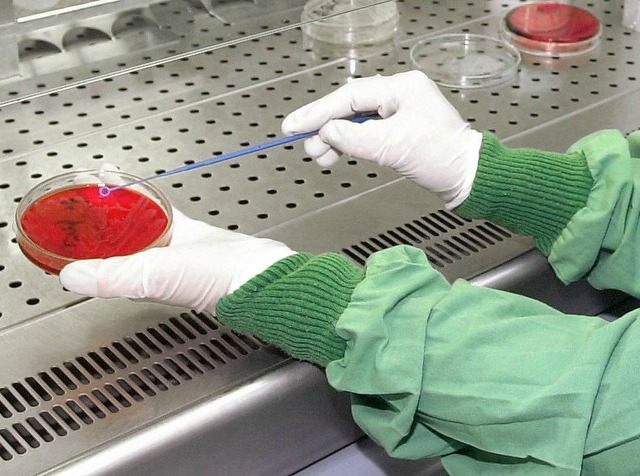WASHINGTON, D.C.—A Department of Defense (DoD) lab sent out live samples of anthrax to 51 other laboratories in 17 U.S. states, Washington D.C., Australia, South Korea, and Canada, Pentagon officials told reporters on Wednesday.
That is more than twice the number of laboratories previously thought to have received the samples, according to data made public by Deputy Defense Secretary Bob Work during a press briefing at the Pentagon.
On May 29, the Pentagon reported that 24 laboratories in 11 states and two foreign countries had received the “suspect samples” of live anthrax.
Fast forward to June 3, the Deputy Defense Secretary Bob Work told reporters, “there are 51 laboratories in 17 states, one in the District of Columbia, and three foreign countries that we believe have received suspect samples.”
“We expect this number may rise,” declared Work.
The samples came from the military’s lab at the Dugway Proving Ground facility in Utah, which was supposed to have killed the samples before it shipped them out.
Pentagon officials refused to identify the labs that potentially received the live samples from Dugway, saying they want to avoid spreading alarm because they do not think there is a general cause for concern.
The samples were shipped out in late April to several labs that were working on a project with the Pentagon to develop a new diagnostic test to identify biological threats, notes USA Today.
The deputy defense secretary assured reporters that, at this point, “there is absolutely no indication” that the live anthrax was sent out “deliberately.”
The military has been shipping out anthrax samples “for 10 years. We have followed these protocols for 10 years. And this is the first time that [the shipment of live samples] has been brought to our attention. So we obviously need to get after it,” he explained.
Rear Adm. Steve Redd, the director of the Office of Public Health, Preparedness, and Response at the Centers of Disease Control and Prevention (CDC) who briefed reporters alongside Work, said that the civilian laboratories that receive the anthrax specimens from the DOD are not regulated because the samples are presumed to be dead.
“So [the specimens] are able to be sent further down [to subcontractors],” he said.
The Pentagon insisted that the risk to the general public “is zero.”
Officials said the concentration of live anthrax shipped out in a vial is too low to infect a person with a healthy immune system, adding that it is in liquid form and not breathable.
Moreover, the packaging in which it is sent out contains safeguards to prevent leaking.
The officials did acknowledge that there is some degree of concern for the lab workers who worked with the samples, noting that 31 of them, a mixture of DOD employees and civilians, are currently in a prophylaxis program because of possible exposure.
Post-exposure prophylaxis (PEP) refers to a short-term antiretroviral treatment to reduce the likelihood of infection after potential exposure.
The 17 states have been identified as California, Delaware, Maryland, Massachusetts, New Jersey, New York, Tennessee, Texas, Utah, Virginia, Washington, Wisconsin, Arizona, Florida, Illinois, Ohio, and North Carolina.
South Korea, Australia, and Canada are listed as the three foreign countries that received the samples.
Work has ordered a comprehensive review of DoD laboratory procedures, processes, and protocols associated with inactivating spore-forming anthrax.
The Pentagon’s investigation will examine the reason why the Pentagon’s irradiation method failed to kill the anthrax and why subsequent testing failed to discover it, Work told reporters, adding that these problems will be fixed.
DoD investigators are expected to finish their probe of why the Army lab erroneously shipped out potentially deadly anthrax samples by the end of June, said Frank Kendall, the DoD’s under secretary of defense for acquisition, technology, and logistics.
Dr. Redd, Kendall, and Navy Cdr. Franca Jones, director of medical programs for DoD chemical and biological defense, are leading the investigation on behalf of Work. They all briefed reporters on Wednesday alongside the deputy defense secretary.
“We are acting with urgency,” said Work.
Investigators are currently testing 400 lots, each one containing various samples.
“So far, at least four batches or lots have been found to have live spores present,” Kendall told reporters. “Because it takes about 10 days… to be certain that there are no live spores are present, we cannot quite eliminate the other batches yet.”

COMMENTS
Please let us know if you're having issues with commenting.